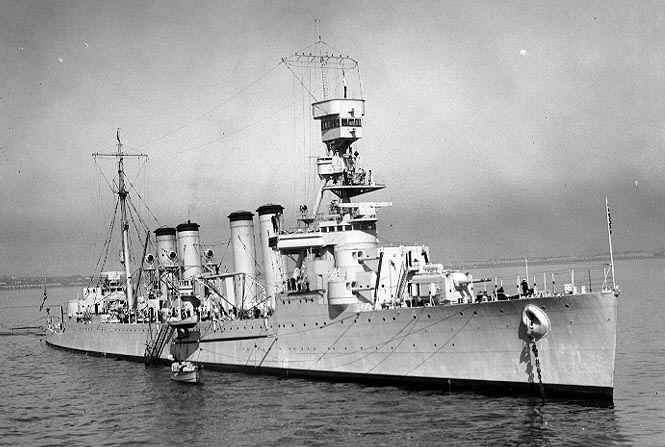|
During initial gunnery trials for USS Trenton (CL-11) on 20 October 1924, two charges of powder in the forward twin mounting were ignited. Twenty men were in the twin mount of whom four died almost immediately and ten died later from burns and inhalation of flames and gases. The remaining six were severely injured. Ensign Henry Drexler and Boatswain's Mate First Class George Cholister were posthumously awarded the US Congressional Medal of Honor for their attempts to prevent the tragedy. Mark 12 was of built-up construction consisting of A tube, liner, full length jacket, two hoops, one locking ring and a screw box liner. The Welin breech was a side-swing model with Smith-Asbury mechanism. The Mark 14 was of autofretted monobloc construction. Mark 15 was to have been a lighter-weight monobloc but was not built. Mark 18 was a relined Mark 12 with chrome plating. |

USS Raleigh CL-7 anchored in San Diego
Harbor 21 October 1933
|
| .
|